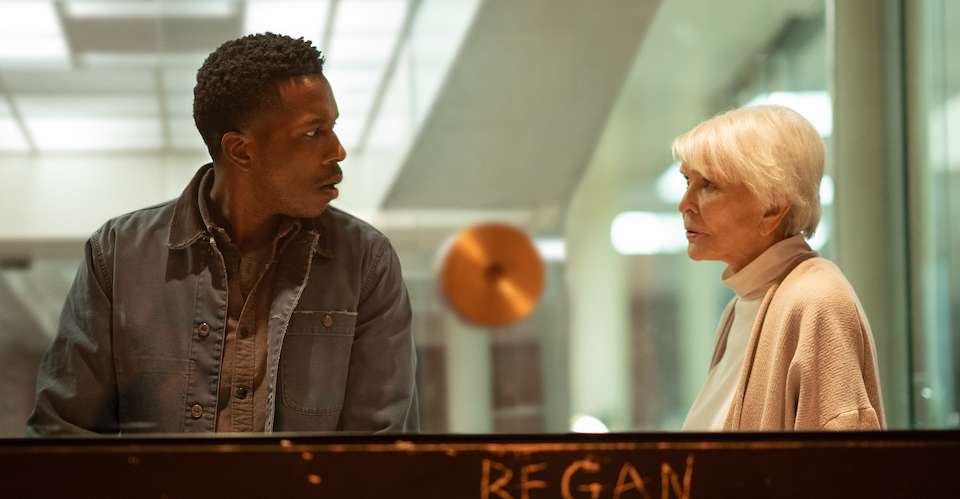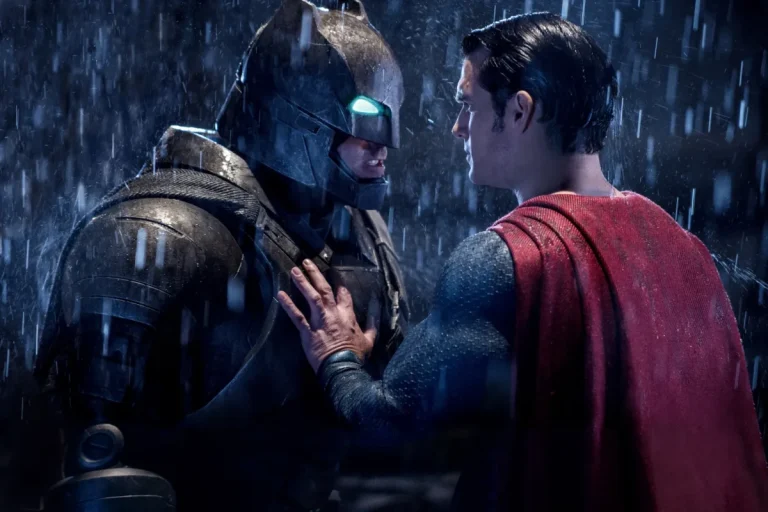The Exorcist: Believer (2023) Movie Review: Skepticism has to be differentiated from disbelief when we are looking at horror film characterizations. Disbelief is used as a character attribute that becomes a source of vulnerability through increased recklessness and/or overconfidence in dangerous situations. Disbelief in the narrative increases the anxiety the audience feels because the audience has their disbelief suspended by the film’s faculties.
Scepticism, on the other hand, doesn’t work in opposition to what the audience feels. It is used as a character attribute that delays the advent of otherworldly narrative elements, which in most cases coincides with the belief system of the audience, giving them the time to adjust themselves to the increasingly discomforting reality of the film. Romancing with scepticism is complex because it mimics disbelief in many aspects.
There comes a sweet spot in the narrative where the audience starts to register the use of the element in certain characters. A good horror film is founded upon a screenplay that knows how to differentiate between the use of the two character attributes. The “pure intention” of a horror film lies in knowing the effect it wishes to have on the audience and a successful manifestation of the intention is in prolonging the effect on its audience.
When I attempt to define the characteristics of a good horror film, I do so with The Exorcist in my mind. The quintessential element rendering William Friedkin’s 1973 film The Exorcist a classic was its exploitation of scepticism. The belief systems of the characters do not exist in simple binaries. The victim of the possession and her well-wishers are sceptical of what they are experiencing, but not motivated enough to outrightly reject possibilities.
The believers, on the other hand, are sceptics themselves, and call for reasoning that rejects orthodoxy. The trait is not particular to a character or two but is widespread in the narrative. While disbelief renders only the disbeliever vulnerable to circumstances in a horror film, the scepticism indiscriminately dispersed as a trait in The Exorcist renders everyone equal parts vulnerable and forceful against circumstances.
This manner of using a simple narrative element disables the audience from choosing a side and unites the audience and the characters with a common goal. Using disbelief as a key narrative inhibitor is largely boring for the reductive effect it has on characters. While it does lay the ground for internal conflicts to arise in disbelieving characters, it also imposes predictability on the screenplay by preordaining the outcome of the internal conflicts: the disbeliever has to come to terms with the developments challenging his ideas or become a victim. Scepticism doesn’t impose any predictability on the screenplay because characters are compelled to function without letting go of this trait, and hence, internal conflicts are never resolved even if the film ends.
I am emphasising what I understand of the two elements, and how I differentiate their effect because they are also what differentiates The Exorcist (1973) and The Exorcist: Believer (2023). Not only The Exorcist: Believer (2023), a sequel coming fifty years after the first film, rests on a mind-numbingly boring screenplay, but it also actively damages its iconic predecessor and everything it established.

The Exorcist: Believer implies by its name the journey of a believer in the occult, either from the beginning or from being a disbeliever to becoming a believer. Leslie Odom Jr. plays Victor, a single father to Angela, who has rejected faith due to many losses in life. Angela, played by Lidya Jewett, is a 12-year-old girl who gets possessed along with her friend Katherine, played by Olivia Marcum when they try to connect with Angela’s late mother.
While Katherine’s parents only have to grapple with the insufferable reality of their daughter, for they are catholic theists themselves, Victor finds himself in a situation where to save his beloved daughter he has to make a genuine attempt at understanding and embrace the beliefs he shuns. His arc is predetermined in a rigid manner. As the film progresses, the various characters fall together in a line and become unidimensional; their differences are eradicated to assemble them together to fight the greater evil. This unison manifests in the form of unidimensionality of characters, with no character left to inject something fresh into the narrative.
At the same time, it actively brands Victor as a sceptic to vocally establish his character traits but while Chris MacNeil’s scepticism was a product of her unawareness and/or non-interaction with the religion, Victor’s feelings are arising out of his experience with the religion itself and hence, are stronger. He needs convincing, unlike Chris who, despite being a sceptic, was forced to convince the other characters including the believers. In this manner, while The Exorcist was careful in attributing nuance to its characters, The Exorcist: Believer has its characters cut from a cookie-cutter.
I assert that it actively harms the first film and that begins with declaring itself a direct sequel to Friedkin’s classic. When Morgan Creek announced its plans to reboot the first film, fans petitioned against it, forcing the production house to announce that the film would instead be a direct sequel. The first thought that came to my mind was perhaps a reboot would have been better because it would at least have an inherent admittance to being an exclusive film with the same skeleton.
This sequel is nothing less than a reboot, except it somehow convinced 91-year-old Ellen Burstyn, who played Chris MacNeil, to appear as her character and damage its legacy. She appears as an author who wrote a mother’s autobiography elaborating on her experience with the exorcism, and sharing everything she has learned about possession and exorcism not limited to Catholicism.
She isn’t an exorcist herself but she’s an expert on exorcists. In one moment clarifying that she wasn’t a direct witness to exorcism being performed on her daughter, Regan, she proclaims the reason to be patriarchy that kept her out of the room. But the tone of the dialogue doesn’t suggest a serious belief but more of a rationalisation, given for some political comic relief, or perhaps, to escape the effort of forming a potent answer.
If political comic relief is the motive, it desperately attempts to score a couple of brownie points with a vocal generation like ours which champions such vocabulary. If the motive is to escape the pressure of forming a potent answer, it renders its screenplay reductive. Chris MacNeil becomes a tool to forge a connection between the two films such that the second one can appear like a sequel. The connection is laughable and creatively bankrupted. It is a reboot disguised as a sequel.
Additionally, unlike the original film which grappled with challenging themes, and subtly questioned the role of organised religion in social paranoia, this film sounds and appears like an endorsement of conservative faith. And to not end it here, it goes on to justify its position in a monologue championing hope and communion. The justification is spoonfed to the audience so that the existence of this film can only be questioned so much.
The Exorcist: Believer is deeply conservative, suffering from the superhero cinema fatigue. It has a bunch of mutually motivated and threatened individuals assembled together to fight a common enemy; a couple of circumstantial jokes sprinkled here and there; and a couple of images that look disgusting but never disturbing.
Things just happen and the film does only as much as provide vanilla arguments to establish its ground rules. A couple of anecdotal coincidences to convince the disbeliever into taking a path hitherto not taken by him and some signature events to establish the possession. And even if the audience is obligated to believe in the world without a substantial discourse occurring within the film itself, The Exorcist: Believer lacks images of shock value.
The great filmmaker William Friedkin died on 7 August 2023 from heart failure and pneumonia, two months prior to the release of this film. If he would have lived to see this reboot masquerading as a sequel, it would have given him great agony. Now that he is no longer with us to witness it himself, the film only feels like an assault on his legacy.




![Welcome Home [2019] Review: A Cerebral Deconstruction of The Institutions](https://79468c92.delivery.rocketcdn.me/wp-content/uploads/2019/06/Screenshot-156-768x322.jpg)



![Mark, Mary and Some Other People [2021]: ‘Tribeca’ Review – Tonally inconsistent comedy explores polyamory in modern relationships](https://79468c92.delivery.rocketcdn.me/wp-content/uploads/2021/06/Mark-Mary-and-Some-Other-People-Tribeca-highonfilms-1-768x316.jpg)